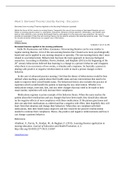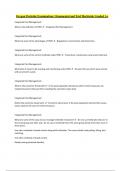Exam (elaborations)
PYC4810 January/October 2018 and January/October 2019 Exam Paper Questions and Answers
- Institution
- University Of South Africa (Unisa)
PYC4810 – Psychology of Work: Exam Questions and Answers to past papers from January and October 2018 and January and October 2019
[Show more]












